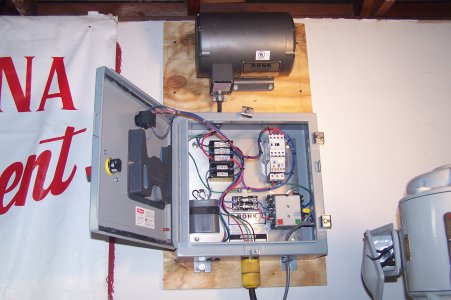After 1/2 hour, my idler is running approx 140F but the lathe motor is only at 95F. Is it normal for the idler to run hotter? It's rated at 50C temp rise so no issue there.
Both at 220, 3/4HP idler, 1/2HP lathe motor, no caps just a rope pull for now.
Also, my lathe motor only has 3 wires and NO Ground so I ran a separate ground to the frame. Is this ok?
Both at 220, 3/4HP idler, 1/2HP lathe motor, no caps just a rope pull for now.
Also, my lathe motor only has 3 wires and NO Ground so I ran a separate ground to the frame. Is this ok?


